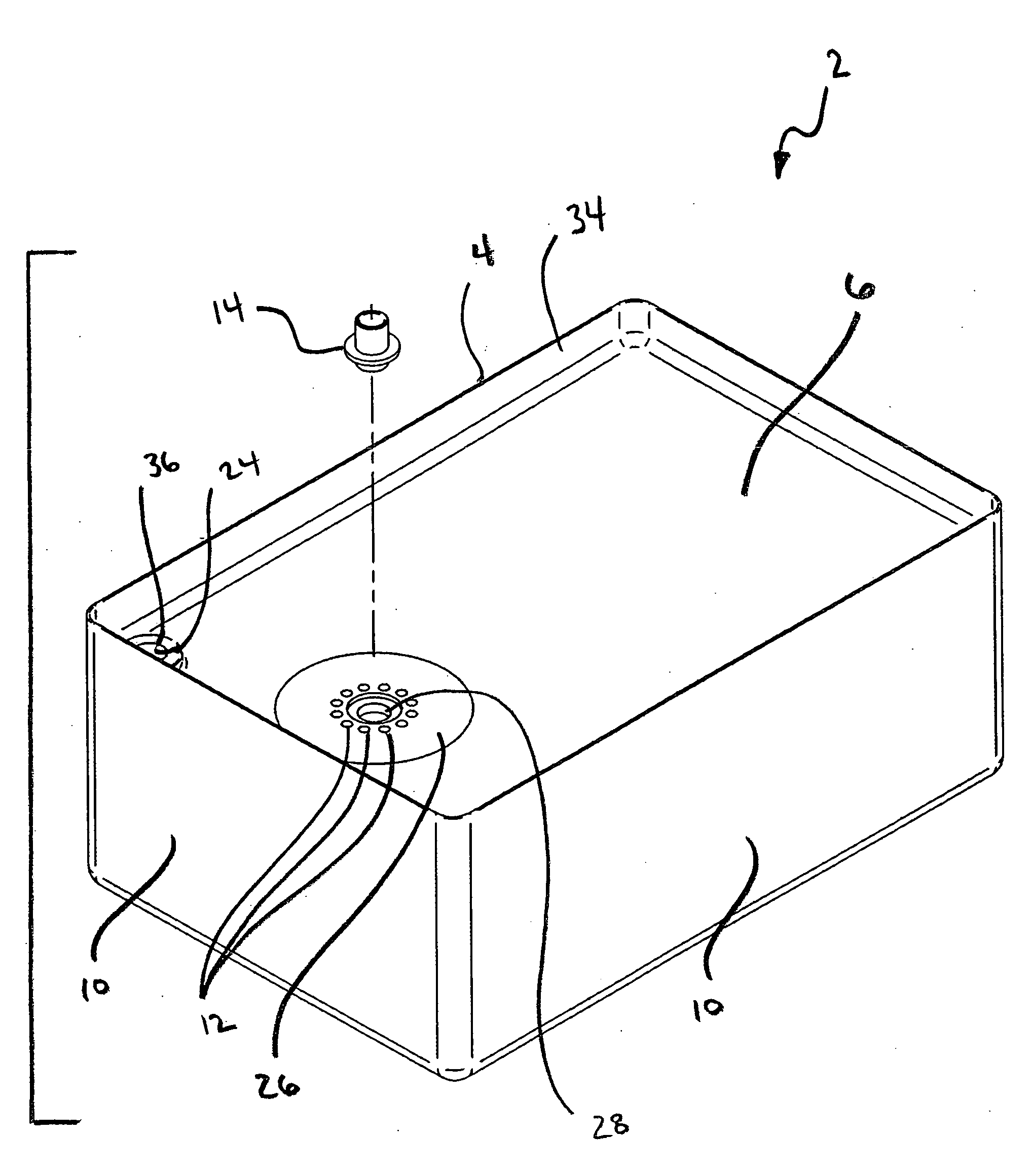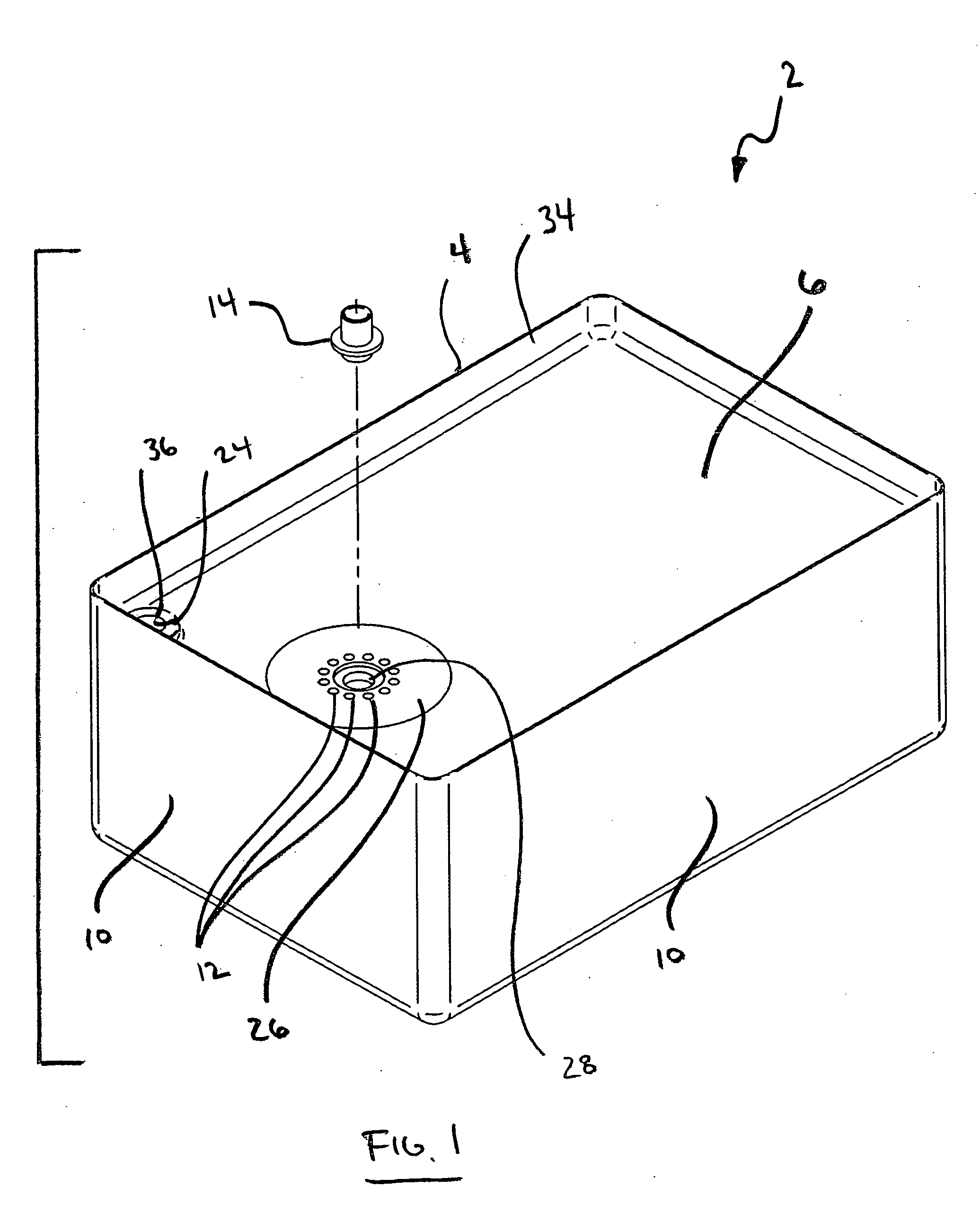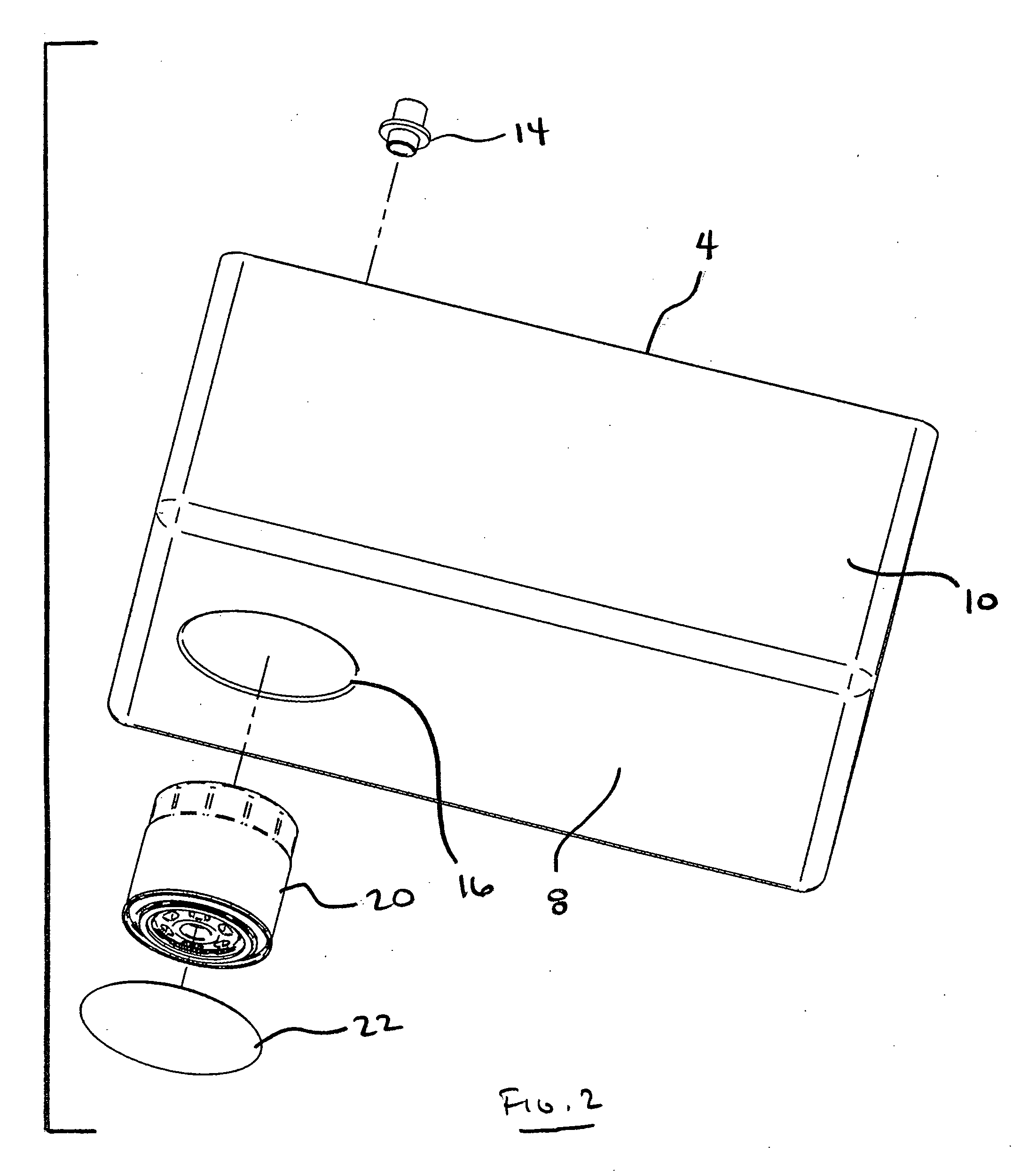Used oil container
a technology for oil containers and containers, applied in the direction of tray containers, transportation and packaging, mechanical equipment, etc., can solve the problems of reducing engine efficiency and engine life, increasing the potential for wear, and reducing the lubricity, so as to achieve a wider base and greater length and width
- Summary
- Abstract
- Description
- Claims
- Application Information
AI Technical Summary
Benefits of technology
Problems solved by technology
Method used
Image
Examples
Embodiment Construction
[0026]The following description is directed to a preferred embodiment of the present invention and is provided to better understand the invention without limiting the scope of the invention in any manner whatsoever.
[0027]As shown in the drawings, and each of FIGS. 1-4, the present invention is directed to a used oil container 2 comprising a sealable container body 4 having a top 6, a bottom 8 and sides 10. The top 6 has a sloping configuration toward one or more openings 12 through which the used oil can enter the container 2. A threaded shaft 14 is adapted to extend from the top 6 of the container body 4 in the area of the one or more openings 12, and conforms to the threaded receiver on a used oil filter 18. Thus, once the used oil has been received into the container 2, the used oil filter can be screwed onto the threaded shaft 14 to seal the one or more openings 12 and allow the used oil from the used oil filter to also drain into the container 2 through the one or more openings...
PUM
| Property | Measurement | Unit |
|---|---|---|
| thickness | aaaaa | aaaaa |
| volume | aaaaa | aaaaa |
| thickness | aaaaa | aaaaa |
Abstract
Description
Claims
Application Information
 Login to View More
Login to View More - R&D
- Intellectual Property
- Life Sciences
- Materials
- Tech Scout
- Unparalleled Data Quality
- Higher Quality Content
- 60% Fewer Hallucinations
Browse by: Latest US Patents, China's latest patents, Technical Efficacy Thesaurus, Application Domain, Technology Topic, Popular Technical Reports.
© 2025 PatSnap. All rights reserved.Legal|Privacy policy|Modern Slavery Act Transparency Statement|Sitemap|About US| Contact US: help@patsnap.com



